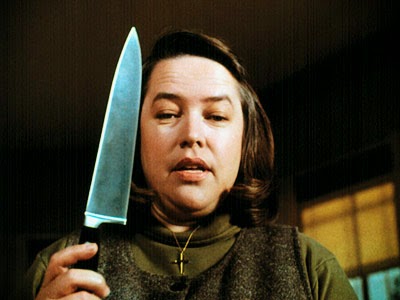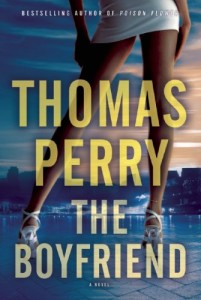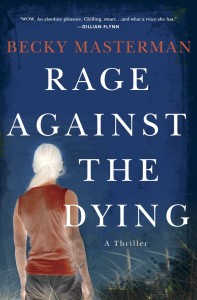By Debbie Burke
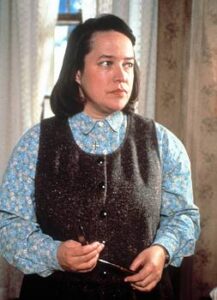
By Downloaded from [1], Fair use, https://en.wikipedia.org/w/index.php?curid=14258218
Lately, villains have been in TKZ’s zeitgeist with posts by Steve and Sue.
In one comment, TKZ regular Marilynn Byerly asked if there is a “Villain’s Journey” that is the flip side to the “Hero’s Journey.” Christopher Vogler outlined the Hero’s Journey in his classic bestseller, The Writer’s Journey.
What a great question!
Down the Google rabbit hole. Surprisingly, I found only one book with that title and it focused on sci-fi/fantasy. But I did find a number of articles and blog posts that drew parallels between the villain’s journey and the hero’s journey.
Here are the 12 stages Vogler laid out that the hero goes through.
- The Ordinary World.We meet our hero.
- Call to Adventure. Will they meet the challenge?
- Refusal of the Call. They resist the adventure.
- Meeting the Mentor. A teacher arrives.
- Crossing the First Threshold. The hero leaves the comfort zone.
- Tests, Allies, Enemies. Making friends and facing roadblocks.
- Approach to the Inmost Cave. Getting closer to our goal.
- The hero’s biggest test yet!
- Reward (Seizing the Sword).Light at the end of the tunnel
- The Road Back.We aren’t safe yet.
- The final hurdle is reached.
- Return with the Elixir.The hero heads home, triumphant.
In theory, the villain’s journey could also go through these same steps but with one major change.
The villain’s journey ends at Step #9.
The villain doesn’t attain the reward and is defeated at the hands of the hero. Game over.
In a 2008 blog post, bestselling mystery and romantic suspense author Allison Brennan says:
Everyone talks about the heroes and their backstory and conflict, but they often forget that the villain needs it all and more–we need to figure out how they became so evil.
The Hero’s Journey is a valuable tool for your writers tool chest. If you remember to apply those steps of the journey to your villain’s life, your bad guy will be richer–and scarier–for it. But it’s not just the “bad guy”–it’s any antagonist in your story. WHY characters do things, even minor characters, is important to know, so if you can identify where they are on their personal journey, it’ll help enrich your story. This isn’t to say every character needs a backstory on the page, but every character needs a backstory in your mind.
University of Richmond psychology professors Scott T. Allison and George Goethals host a blog called Heroes: What They Do and Why We Need Them. In a 2014 post, they posed the question: “Does the Villain’s Journey Mirror the Hero’s Journey?”
Do heroes and villains travel along a similar life path? Or do villains experience a journey that is the inverse of that of the hero?
Both heroes and villains experience a significant trigger event that propels them on their journeys. Heroes and villains encounter obstacles, receive help from sidekicks, and experience successes and setbacks during their quests.
We’ve observed that many stories portray villains as following the hero’s life stages in reverse. Whereas heroes complete their journey having attained mastery of their worlds, the story often begins with villains possessing the mastery. That is, hero stories often start with the villains firmly in power, or at least believing themselves to be superior to others and ready to direct their dark powers toward harming others.

By Mike Maguire – Witch, CC BY 2.0, https://commons.wikimedia.org/w/index.php?curid=55221516
They offer examples of the Wicked Witch in Wizard of Oz, Nurse Ratched in One Flew Over the Cuckoo’s Nest, and Annie Wilkes in Misery.
The story begins with the villain securely in power, the master of his or her world. The heroes of these stories, in contrast, are weak and naive at the outset. Only after being thrust into the villains’ worlds do these heroes gather the assistance, resources, and wisdom necessary to defeat the villains.
The villain’s story is thus one of declining power while the hero’s story is one of rising power…In defeat, the villain’s mastery is handed over to the hero. The villain’s deficiencies of character have been exposed; the hero’s deficiencies have been corrected. The two journeys, one the inverse of the other, are completed.
In another article, Scott traces the stages that cause some people to become villains, both in real life and in fiction:
- The pre-villain is an ordinary person living in an ordinary world that is safe and familiar.
- Something happens that hurls this ordinary person into the “special world” that is dangerous and unfamiliar.
- Often this new dangerous world is the world of abuse, with the ordinary person at the receiving end of emotional or physical abuse.
- Typically, the abuser is a parent, but sometimes another authority figure, peers, or harsh social conditions damage this ordinary person.
- The ordinary person suffers psychological harm that can assume the form of narcissism, psychopathy, depression, or schizoaffective disorders.
- This mental illness distorts the ordinary person’s views of themselves and the world, often producing an extreme self-narcissism and/or collective narcissism of their community or nation.
- The ordinary person remains unaware of their skewed perception of reality and is never able to acknowledge their damaged state nor their need for psychological and/or spiritual help.
- As a result of their untreated trauma, the villain undergoes terrible suffering, often in private, but is unable to learn or grow from it. Their deep fears and sadness transform into anger.
Okay, that covers the villain’s backstory and motivations but…
What about mysteries where the villain is hidden until the end? How does a writer handle the origin story and motivations when the villain’s point of view is never shown?
We’ve all watched films with the tired old trope where the hero is captured and tied to a chair. Then, because the writer couldn’t think of a less clumsy device, the villain bares their soul to the hero, revealing they were driven to exterminate humanity because they’d been potty-trained at gunpoint.
To avoid that pitfall, Chris Winkle of Mythcreants.com offers these suggestions:
The most important method of showing your villain’s character arc – or any character arc – is demonstrating a change in behavior. If you keep their arc simple enough, that could be all you need. The basic unit of changing behavior would look like this:
- The villain shows a clear pattern of behavior.
- An event occurs that would reasonably impact the villain.
- The villain shows a different pattern of behavior.
Chris outlines several options for the unseen villain’s character arc:
Gain/Loss:
“The villain gains and/or loses something they care deeply about, and that drives their character change. Usually what they gain or lose is a person they love, but it can be anything as long as you can show the audience why it’s so important.”
Obsession:
“This is a villain that changes their motives during the story because they acquire a new obsession or goal. Often that obsession is the main character, but it also might be a shiny new superpower.”
Revelation:
“This is a great arc for villains who think they’re doing the right thing and consider all the harm they cause justified. In this arc, they have a revelation that challenges this belief, forcing them to adapt.”
Chris’s summary:
If you want a sympathetic villain and you can afford to give them their own viewpoint, that’s great. Give them a deep arc your audience will remember.
But if that doesn’t fit your story, bring them to life in whatever space you have to work with. If you can’t manage a complex arc, create a simple one.
~~~
Many thanks to Allison Brennan, Scott Allison and George Goethals, and Chris Winkle for allowing me to quote their various interpretations of the Villain’s Journey.
And thanks, Marilynn, for asking a terrific question.
~~~
TKZers:
Do any of these techniques resonate with you?
How would you add, subtract, or change steps in the Villain’s Journey?
~~~
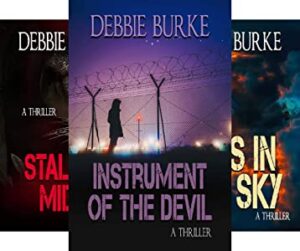
Please check out various Villain’s Journeys in the Tawny Lindholm Thriller series by Debbie Burke.

